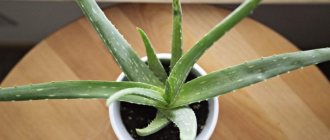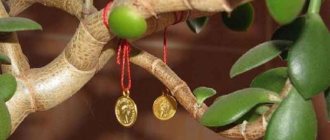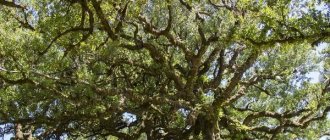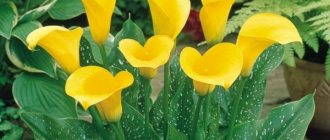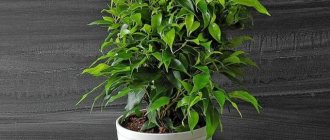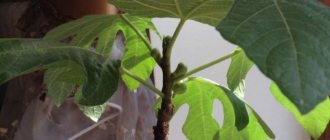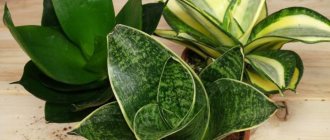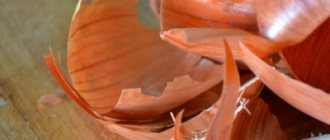We all love to grow exotic plants at home, one of such representatives is feijoa. Feijoa is an evergreen shrub of the Myrtaceae family, genus Akka. Grows in warm countries. The plant appeared in Europe in the 80s of the last century. Increasingly, they began to grow it here too. Let's figure out how to grow feijoa at home.
Features of feijoa
Feijoa is a spreading and very huge bush or tree, the height of which is approximately 4 meters. The densely branched, but compact root system is located shallow. The surface of the trunk is covered with a brownish-greenish rough layer. Cross-shaped opposite short-petioled leaf blades have pinnate veining and a rounded shape; they are entire-edged, but leathery to the touch, often drooping.
The front surface of the leaves is smooth, darkish green, and the underside is pubescent and grayish-green. Axillary four-membered bisexual flowers are paired, single, and in some cases create a small corymbose inflorescence.
They have a huge number of stamens - 50–80 units; the snow-white petals change their color to pink as they approach the base. Flowering duration is approximately 20 days. This plant needs insects for pollination.
Another reason why you need to know how to grow feijoa at home is the fruit. It is incredibly tasty and aromatic. The berry is juicy and fleshy. The shape depends on the variety. Length varies (up to 7 cm). The taste and aroma is similar to a combination of kiwi, pineapple and strawberry.
What is feijoa: is it a fruit or berry, where does it grow and what does it look like?
The feijoa fruiting evergreen plant takes the form of a shrub or not very tall tree. Valued for its fertility.
For your information! It was first discovered only at the end of the 19th century. in South America, from where it quickly spread to Europe.
Appearance of feijoa fruit
Feijoa - what is it
The genus feijoa has another name - Akka Sellova (lat. Ácca sellowiana). The plant is usually classified as a member of the Myrtaceae family (Latin: Myrtaceae). It was discovered by the scientist J. da S. Feijo, in whose honor the name of the sweet fruit was given.
An evergreen shrub or tree does not grow higher than 4 m.
Feijoa: where it grows in nature
The birthplace of the culture is the subtropics and tropics of South America. Today, the plant’s distribution area covers all corners of the planet with fertile soil and a warm climate without negative winter temperatures, including the south of Russia.
Note! Feijoa frost resistance is down to −5 °C, but subtropical representatives can withstand such cold temperatures for a very short time.
Between tropical and subtropical climates, feijoa prefers subtropics (for example, the south of the Russian Federation), which explains the presence of huge plantations along the entire Mediterranean coast, in Dagestan, in the south of the Krasnodar Territory, in Georgia, Crimea, the Caucasus, Turkmenistan and Transcaucasia. There the plant is grown in the same volumes as the figs with which they are adjacent.
Mature feijoa tree
What does a feijoa tree look like?
The crown of the plant is spreading, often twice its height in width. The root system is superficial and highly branched, but at the same time quite compact. The culture is moisture-loving. The trunks are covered with bark with a rough greenish-brown surface.
Feijoa leaves
The leaves are simple elliptical or oval in shape; on the shoots they grow on short petioles in an opposite direction. The leaf surface is hard, leathery, with pinnate veining. The lower surface is lighter - greenish-gray with slight pubescence, and the upper surface is smooth, dark green.
How feijoa blooms
Buds grow from the axils of the leaves. They can be single, paired or collected in small corymbose inflorescences. All flowers are bisexual and attract attention with their long, numerous (up to 80 pieces in the corolla) stamens. The color of the petals is white and pink. They require cross-pollination because they are self-sterile. Pollination is carried out by insects.
Feijoa flowers
For your information! In the Northern Hemisphere, feijoa blooms from May to June, and in the Southern Hemisphere from November to December. Various varieties can be once flowering or remontant. Typically, mass flowering lasts about 3 weeks.
Feijoa season
Surprisingly, up to 80% of the formed feijoa ovary will fall off, since the plant is not able to ensure the ripening of such a number of fruits. In the Northern Hemisphere, fruiting lasts in industrial gardens from April to November; in the Southern Hemisphere, fruits are harvested from October to April.
Plants enter fruiting age at 6-7 years of age. In order not to wait so long, seedlings for mass planting are grafted. This method allows you to get the first harvest already 2-3 years after planting.
Feijoa is a fruit or berry
What the crop is definitely not is a vegetable. The fruit is a rather large, fleshy, juicy berry with non-falling sepals that remain on the crown after flowering. The color of the dense, hard peel is dark green with an anthocyanin coating. The shape of the fruits is round, their length is 2-5 cm, their diameter is from 1.5 to 5 cm. On average, the weight of the berries is 15-60 g.
Note! The taste and aroma are reminiscent of kiwi, pineapple and strawberries at the same time. Inside is a translucent whitish-yellowish pulp with a sweet-sour taste, which contains numerous seeds.
Feijoa branch with fruits
Beneficial properties of feijoa and dangers
Eating feijoa fruits has many benefits for human health. They contain vitamin C, a lot of pectin, iodine, and sugar. 100 g contains up to 50 mg of vitamin C, as in many citrus fruits, and iodine is 2 times more than the daily intake of an adult. The closer the tree grows to the sea coast, the higher the concentration of iodine in its fruits.
For your information! A very tasty drink made from feijoa - natakhtari - is very popular all over the world, and the Darkside feijoa variety is known among hookah fans.
It is believed that people with thyroid diseases, as well as ulcerative colitis, should eat feijoa after consultation with their doctor. Excess iodine can be harmful in certain pathologies. The healthy daily intake of berries is only 1-2 pieces.
Feijoa planting
Feijoa is a beautiful, exotic plant that can be grown on a windowsill at home. To do this, buy a ripe fruit and put it in a warm place to ripen. Ripe fruits have a pale yellow peel. When the berry is ripe and soft, cut the fruit into two halves and remove the seeds along with the pulp. Then gently rub the pulp onto a thick cloth and rinse off the mucus under the tap. Dry the fabric together with the seed. The seeds are very small, so when they dry, mix them with a small amount of sand, this will make sowing easier.
Small pots or flat containers with drainage holes are suitable for planting. Place a layer of small expanded clay or pebbles on the bottom, and then fill the container with a mixture of sand and turf soil (1:1). Scatter sand mixed with seed material over the surface of the soil mixture and press down slightly. There is no need to cover it with soil. Moisten it with a weak solution of potassium permanganate from a spray bottle and cover the container with glass or a bag. Place the container in a warm, well-lit place. Ventilate the pot periodically and remove condensation.
How to propagate a tree
Feijoas are propagated by several vegetative methods - cuttings, root suckers, layering and grafting. Propagation by seeds gives good results.
Seed method
The simplest and most common way to obtain new feijoa specimens is seed propagation. This method also has a drawback. What is feijoa from seeds? It is impossible to predict what the seedling will look like - the result is heterogeneous planting material. Seedlings differ in growth vigor, foliage and other vegetative characteristics.
To obtain high-quality planting material, seeds are collected from the best specimens with high taste and decorative properties. The fruits are selected large, ripe and wait until they are completely softened, without allowing them to rot. Then the fruits are carefully crushed and the seeds are separated from the remaining pulp by repeated washing with water. Then the seeds are dried.
Note! One feijoa fruit contains up to 30 small seeds. Accordingly, from a kilogram of fresh berries you can get about three grams of seeds
Sowing is carried out in February - March in a low container filled with a mixture of soil, high peat and sand (2: 2: 1). Before sowing, the soil is slightly compacted and moistened. Make grooves 5 mm deep on the surface of the earth and distribute the seeds in them at a distance of 3-5 cm from each other. The crops are covered with soil and moistened with a spray bottle. The container is covered with cellophane and placed in a bright place. The temperature is maintained in the range of 16-20 ℃.
After a month, shoots appear. The greenhouse is ventilated daily, and over time the cellophane is completely removed. When young plants have 2-3 pairs of true leaves, they are transplanted into separate containers, pinching off the tap root. The substrate for grown seedlings is heavier and more fertile: 6 parts of turf soil, 4 parts of leaf soil and one part each of sand and humus.
Feijoa seedlings
Cuttings
In autumn, cuttings are taken from the upper and middle parts of semi-lignified shoots. Their length is 8-10 cm, each should have three knots. The cutting is treated with Kornevin and placed obliquely in the substrate, burying the lower node in the ground. The soil is moistened and the plant is covered with a glass jar. It is difficult for feijoa cuttings to root; bottom heating can be used for stimulation. If rooting is successful, after about two months the seedlings are moved to pots with a nutrient substrate.
Layerings
A more reliable method of vegetative propagation is propagation by layering. But this method requires a long time and the availability of suitable branches. For layering, the lower part of the bush is used, which has a limited number of shoots.
Feijoa fruiting
In spring, small cuts are made on the lower young shoots. The branches are pressed to the ground, secured with staples in shallow grooves. The layers are covered with nutritious loose soil on top. The soil above the layerings is regularly moistened. Rooting occurs after 5 months, after which the cuttings are separated from the mother plants and planted in separate containers.
Additional Information! Feijoa seedlings bear fruit at 5-6 years of age, and plants obtained as a result of vegetative propagation begin to bloom and bear fruit in the second or third year.
Possible problems in growing
Both garden and indoor forms of feijoa are disease resistant. In tub specimens, vegetation problems may be associated with improper care - excessive watering or, on the contrary, drying out of the earthen clod. These issues are resolved by optimizing the conditions of detention.
Sometimes sucking pests settle on feijoas: scale insects and mites. Scale insects are crawling insects that have a waxy shield in the form of a convex growth. Mites are very small pests, the presence of which can be determined by the presence of thin cobwebs on plants. In case of severe infection, insecticides and acaricides are used. If the lesions are isolated, pests can be collected manually and the plant can be washed with soapy water.
Akka is a plant that is as decorative as it is useful. Along with healing and tasty fruits, feijoa has a beautiful crown and spectacular flowering, which allows the crop to successfully compete with other indoor plants.
Illumination
If you know how to grow feijoa at home and have done everything correctly, sprouts will appear in 30-35 days. Immediately after the seeds germinate, remove the glass, and as soon as the sprouts start to rise, remove all weak shoots. Feijoa is a sun-loving crop, so young plants need to be provided with bright but diffused light. If the seedlings appeared in the spring, then simply place the pots on a western or eastern window. If your seedlings appeared in winter or autumn, illuminate them with a photo lamp. Remember that young shoots will stretch out due to lack of light.
How to propagate by seeds
Feijoa can be propagated in different ways, but seed propagation is the easiest option. The seeds are taken out from the ripened fruits, washed and laid out to dry. Then follow this algorithm:
- Prepare containers.
- Fill them with river sand substrate.
- Place the seeds so that the sand covers them by 4-5 millimeters.
- Cover the bowls with glass or cover with film. This is necessary to regulate the humidity regime.
- Provide the seeds with warmth (+20-25 degrees) and ensure that they receive a sufficient amount of natural or artificial light.
Sowing is best done in the spring. Akka Sellova seedlings will germinate approximately 3-4 weeks after planting the seeds.
Top dressing
When active plant growth is observed, systematic feeding is necessary. Feijoa is fertilized once every two weeks throughout the year. Following the advice of experts, it is better to use organic fertilizers. Bird droppings diluted in a ratio of 1:15 or mullein (1:10) will work well. When using mineral fertilizers, superphosphate (1 tsp/1 l of water) is best suited; it is boiled and, after cooling, diluted with water 1:2. If it is necessary to use potassium fertilizers, an ash extract is well suited: 1 large tablespoon of ash is diluted in a liter of water, left to infuse for a week. It is necessary to alternate potash, phosphate and nitrogen fertilizers. They are introduced only after watering.
Plant care
Since feijoa is a tropical plant, it needs to be provided with conditions as close as possible to its native ones in the house. This is not difficult, but you will have to take into account some features, otherwise the exotic guest will not please you with the harvest, and in some cases may die.
Appropriate place
We said above that when growing seedlings, plantings need good sunlight. A rooted cutting or mature bush will require constant but diffused light. The best choice would be windows on the southwest or southeast side. If this is not possible, please consider the following rules.
Growing feijoa trees need a well-lit, but not too hot place.
- When placing a pot with a plant on the south side, shade it slightly in the afternoon by placing a screen or a wide sheet of paper near the glass.
- If the pot is on the north side, the feijoa will need additional lighting using special phytolamps.
Lighting may be needed in the autumn-winter period. This will help prevent leaves from falling.
Air temperature and humidity
Despite the fact that feijoa is native to the tropics, the plant tolerates not only high temperatures (up to +30° C), but also low temperatures, even negative temperatures. Still, it is better if in winter the temperature does not exceed +12° C, and in summer – +20° C. If you provide proper watering, then higher temperatures will not harm the plant.
In the summer, feijoas can be taken outside
In summer, it is advisable to keep the feijoa pot outside or on an open balcony. In addition, the plant needs high indoor humidity, not lower than 80%. To do this, you will need to generously spray the bush every day from roots to leaves.
Spray your feijoa regularly to provide the plant with the necessary moisture.
Soil for feijoa
There are no special soil requirements for growing feijoa at home. You can buy a ready-made potting mix for flowering plants, such as azaleas, or make your own. For it you will need:
- 1 part leaf soil;
- 1 part turf;
- 1 part humus;
- some river sand;
- a little peat.
Mix all components thoroughly so that the mass is homogeneous. Be sure to bake the soil mixture in the oven at a temperature of at least 150° C for about 15–20 minutes. This is necessary in order to get rid of harmful bacteria contained in the soil.
At the bottom of the pot in which the feijoa will be planted, be sure to lay a layer of expanded clay or small pebbles for drainage.
Remember that feijoa, like many other plants, requires a drainage layer at the bottom of the pot
Feeding and fertilizers
Feijoa especially needs feeding during the period of active growth and flowering. Nitrogen, potassium and phosphorus fertilizers will be optimal for it. They need to be applied separately, with an interval of 2-3 weeks. Each time before feeding, the plant needs to be watered properly.
You can prepare the fertilizers necessary for feijoa yourself.
Note! Fertilizers are applied for the first time no earlier than 3 years after the plant is replanted.
You can prepare all fertilizers yourself.
- Mullein, which is diluted in water in a ratio of 1:10, is well suited for nitrogen fertilizer. It is enough to apply 100 g of product to each tree.
- After 2 weeks, add phosphorus fertilizer to the soil. To prepare it, dissolve 1 teaspoon of superphosphate granules in 1 liter of boiling water. Wait for the solution to cool and pour 1 liter of warm boiled water into it. For each tree you need to add about 50 g of solution.
- Wood ash can act as potassium fertilizer. Dissolve one tablespoon of ash in 1 liter of water and leave for a week. Water the soil around the feijoa with the solution.
How to water feijoas correctly
Soil moisture is a must for plant health. In the hot season, you will have to water your feijoa often and abundantly, otherwise the roots may dry out. The consequence of this will be the dropping of leaves and the death of the plant.
It is better to place the feijoa pot in a deep bowl. This is where excess water will flow through the drainage holes. There is no need to drain it; it will eventually be absorbed into the soil if necessary. Excessive watering can also harm the plant: roots that poorly absorb water can begin to rot.
In winter, feijoas enter a dormant period. At this time, watering should be sharply reduced.
For watering, use soft water at room temperature. It is advisable to pre-filter or settle it.
Transfer rules
In the first 3 years of life, the plant requires replanting annually, and then only once every three years. The best time for the procedure is April or May. The soil is prepared in advance.
Transplantation is carried out by transferring the plant from one container to another, without damaging the earthen coma. In case of disease infection or noticeable root rotting, all soil must be cleaned and damaged areas removed. Since feijoa branches are fragile and thin, be careful when replanting.
During the first three years, feijoas need to be replanted annually.
It is better to choose a clay or ceramic pot for the plant. Each new container should be 8–10 cm larger in diameter. It is not recommended to bury the roots too deeply during planting as this will harm the healthy growth of the feijoa. Therefore, a too large pot will not work either.
Crown formation
Since feijoa can grow to large sizes even when grown at home, it requires crown formation. The first time pinching is carried out when the seedling reaches a height of 15–20 cm. In this way, the growth point in the uppermost part of the young plant is removed. At the cut site, two buds will appear that will produce side shoots. The branches that will appear from them over time also need to be pinched. Next, two more buds are formed at the cut sites, after pruning - two more, and so on. Over the course of 3–4 years, regularly pinching the shoots, you will form a beautiful compact crown.
Proper pruning and pinching will help you form a beautiful crown of your feijoa
Remember that you need to promptly remove elongated weak shoots and root shoots.
When the feijoa first begins to bloom, the formation of the crown can be stopped. From now on, only preventive pruning of old, damaged and diseased branches will be required.
I have more than once come across the opinion that pinching and pruning interfere with feijoa fruiting. Allegedly, the ovary is formed only on young shoots, and when pruning them to form a crown, we leave only old branches. I wasn’t too lazy and turned to a friend who, several years ago, became interested in growing this tree in her apartment. She has several specimens, grown both from seeds and from cuttings, and she pinches half of them according to the scheme described above. So, some of them bore fruit last year, and they are 4 years old! She promised to treat me when the fruits ripened.
Diseases and pests, combating them
Like any plant, feijoa can be susceptible to specific diseases or attacks by harmful insects. The reason for this is most often violations of maintenance conditions, improper care or errors during planting.
In home growing conditions, fungal infections pose a danger to feijoa. To destroy the fungus without harming the plant, use fungicidal preparations, which can be purchased at flower shops. Remember to strictly follow the instructions on the package.
Fungicides will help you cope with fungal infections in case of feijoa infection
Among the insect pests dangerous to feijoa are:
- brown false scale;
- red spider mite;
- worm.
To prevent the appearance of false scale insects or prevent its reproduction at the first appearance, wipe the branches and leaves of the plant with a cotton swab dipped in a soap solution. At the same time, be careful not to let the soap get on the soil.
If time has been lost and the false scale insect has become a problem for the plant, spray with a solution of Karbofos in a ratio of 5 g of substance per 1 liter of water. treatment will need to be done 2-3 times at weekly intervals.
Karbofos solution will help get rid of multiplying false scale insects.
Spider mites infect young feijoa shoots with low indoor air humidity and insufficient watering. To completely get rid of this insect, it is enough to treat the leaves and branches once with Keltan solution in a ratio of 2 g of substance per 1 liter of water. Please note that this treatment must be carried out on a cloudy day, since exposure to the drug and sunlight can lead to burns on the leaves.
Plants affected by mites gradually wither
The scale insect very rarely harms feijoas. But if this happens, any broad-spectrum insecticide will help control the pest.
The scale insect rarely attacks feijoas, but can cause irreparable harm
If the feijoa begins to shed its leaves, it means that you have violated the watering regime. Most likely, the soil is either dry or has been waterlogged for a long time.
Too intense sunlight leaves burns in the form of yellow spots on the leaves. It is advisable to install the pot so that the leaves do not come into contact with the window glass: this also leads to the formation of burns. On the other hand, lack of lighting leads to a significant deterioration in crop growth.
Feijoa transplant
Until the feijoa reaches three years of age, it must be replanted every year. Transplantation is carried out in a soil mixture, which consists of sand, peat, humus, turf and leaf soil in a ratio of 1:1:1:1:1. A mature plant is transplanted into a new pot every couple of years. Old ones need to be replanted once every five years. When replanting, the soil mixture that is on the roots does not change, but only if there are no pathogenic microflora and pests, and also if it has not soured. Feijoas are transplanted using transshipment. Everything must be done extremely carefully, because the roots of this plant are very delicate and fragile.
Use of fruits
It is most beneficial to consume fresh berries in the form of purees or salads. Many people pass washed fruits with trimmed stalks through a meat grinder and mix the pulp with sugar or honey. The resulting mass is not subjected to heat treatment, it is ready for use. Store it in the refrigerator.
Feijoa puree is used in the preparation of compotes, jelly, jam, and as a filling for sweet pies. But you need to remember: as a result of heat treatment, many valuable substances of the fruit are destroyed, especially vitamins and organic acids. When frozen, some of them are also lost.
Using the berries, a sweet, aromatic liqueur is prepared. They are crushed, poured with alcohol, vodka or cognac and infused in a cool, dark place. Some consider this drink to be medicinal. In fact, this is not the case, since alcohol also destroys valuable feijoa compounds. Only part of the macro- and microelements remains in the liqueur. It is unlikely that you can even get rid of a cold with its help.
Feijoa pruning
Those who want to know how to grow feijoas at home need to understand that their height can be up to 6 m and higher, which makes pruning necessary. If everything is done correctly, the bush will not suffer and will continue to bear fruit normally, but at the same time its crown will become more decorative. Pruning is carried out in early spring or late autumn. For such work, use a well-sharpened pruner or knife, which is first disinfected in medical alcohol for half an hour. You can boil it in plain water. As soon as the bush reaches a height of 25-30 cm, it is shortened by one third. If necessary, formative and sanitary pruning is carried out. The cut is made at an angle of at least 60-70°. All excess is trimmed off. Branches that are injured, withered, or damaged by disease or pests are subject to mandatory pruning. To give the bush the shape of a tree, it is necessary to permanently cut off all the shoots of the lower part of the trunk. Fruiting on these branches will be minimal, and without them the bush will become a beautiful tree. When cutting branches, it is necessary at an angle of 45°, leaving only very short stumps, which will dry out very quickly. After all the manipulations have been carried out, the cut sites must be treated with a fungicide.
Feijoa diseases
The main feature of this plant is its enormous resistance to disease. If you care for him properly and provide him with good conditions, then no diseases are scary. However, if you water incorrectly and take poor care of the bush, there is a high probability that the feijoa will get sick and grayish rot will form on it. This is a very rare disease for this plant. If trouble does happen, the first step is to treat the bush with a special solution. If the mentioned plaque has formed, then the sore spots must be carefully cut out, capturing a little healthy tissue, then sprayed with a special mixture. However, you should remember that you need to water the plant correctly, otherwise rot may appear again.
Harmful insects
It’s not enough to know how to grow feijoa at home. You also need to know how to control pests. The main enemies of feijoa are red mites and false scale insects. The former usually feast on stems and leaves. Keltan mixture is the main weapon against these insects (you need to take 2 g per 1 liter of water). We recommend spraying in the evening, otherwise the plant may get burned due to the sun's rays. After the entire procedure, the solution is valid for 40 days, therefore, re-treatment is not required. It is recommended that the plant be given a shower so that there are no mites on the plant.
Pseudoscale insects like to be found along the midrib on the outer surface of leaves. A mixture of Karbofos (several grams per liter of liquid) is the main remedy against pests. The leaves are sprayed on both sides with this solution. However, in this case, the procedure must be repeated. The break between treatments is several days.
Humidity and temperature
Feijoa tolerates both high (up to +30C) and low, negative temperatures equally well. But it is desirable that in winter the air temperature does not exceed +12C, and in summer – +20C.
Important. With proper care and watering, the plant will perform well even at higher temperatures.
If possible, in summer it is better to place the feijoa pot outside or on an unglazed balcony. All year round it is necessary to maintain high air humidity in the apartment, about 80%. To ensure this, you will have to spray the leaves and roots of the plant daily.
The leaves of the Feijoa plant must be regularly sprayed with water.
How to grow feijoa at home
For this process, the cutting or seed method is used. In the first case, you will need half-ripe pods with three internodes. The cut areas must be treated with a solution that promotes the formation of the root system. Planting of roots is carried out in light soil. Pure river sand, vermiculite, and flower mixture work very well. In the latter case, it must be combined with perlite or vermiculite. Cover the cutting with a glass or plastic jar. It must be remembered that the container must be located in a warm place (about 25 degrees Celsius). The process of forming new roots can last more than a month, but it also happens that they may never appear.
Feijoa propagation: how to get new plants
It should be remembered that to produce fruit you will need two feijoa trees - the plant is cross-pollinated. But even if this condition is met - the presence of two adult specimens - pollination is very difficult to achieve. When grown indoors, you will need to purchase seedlings of parthenocarpic varieties that pollinate themselves.
It is possible to propagate feijoa by cuttings and fresh seeds, but it is worth remembering that the tree belongs to the Myrtaceae family, all plants of which take root during vegetative propagation with great difficulty. You can start cuttings in the second half of April. It is best to take cuttings not from old shoots, since their coarse branches are not suitable for rooting. But too young branches with soft bark are also not suitable for cuttings.
Feijoa can be propagated by seeds or cuttings
Suitable feijoa branches are cut into cuttings with up to 3 internodes. For better rooting, the lower cut is treated with growth stimulants for accelerated root formation, “Kornevin” is suitable; "Gumat"; "Epin."
The treated cuttings are planted in a greenhouse with fertile light soil (a mixture of nutrient soil, sand, vermiculite or perlite).
Advice! When rooting feijoa cuttings, it is important to ensure a constant high temperature - not lower than +25 C.
Don’t be upset if less than half of the cuttings take root – the crop is one of the difficult-to-root indoor plants. And of course, you need to be patient - the rooting of cuttings takes even a month.
Young cuttings begin to bloom in the 3rd year, but may not set fruit. Seed propagation is an even longer process - seedlings can bloom in 5-6 years.
Regularly treat crops against pests
Types and varieties of feijoa
Before you learn how to grow feijoa at home, you should choose the right variety. The easiest to germinate are the following:
- Light. The fruits are oval-shaped, with lumpy skin and dark green color. Lighten as they mature. The taste is reminiscent of strawberries.
- Nikitskaya. Reminds me of the variety mentioned above. The taste is fresh, sweet and sour.
- Lumpy. Oval, has seeds.
- Early. Fragrant and tender pulp, sweet and sour fruits. The skin is smooth. Lots of seeds.
Other varieties are also used. But these are the easiest to grow at home.
Photo of plant and fruit
The plant itself is a shrub, reaches a height of 4 m. The root system is located in the upper layers of the soil, so the shrub is moisture-loving. The hard, oval-shaped leaves are attached to the branches by cuttings. Foliage color ranges from green to silver-gray.
The plant is bisexual, the ovaries appear during pollination. It begins to bloom in May-June; the inflorescences can be single or several in a peduncle.
In the homeland of feijoa, photos of the shrub plant and fruits show how the berries are arranged and ripen.
Beneficial properties of feijoa
Berries are beneficial for the human body because they contain:
- magnesium;
- potassium;
- calcium;
- iodine;
- zinc;
- manganese;
- copper;
- phosphorus;
- iron;
- vitamins C, PP, B1, B2, B3, B5, B6.
These are not all useful substances. Feijoa contains more iodine than seafood. Therefore, you need to know how to grow feijoa at home. After all, this is a storehouse of health.
Recommended for the following diseases:
- gout;
- Graves' disease;
- atherosclerosis;
- arthrosis;
- cold;
- weak peristalsis;
- disorders of the gastrointestinal tract;
- kidney disease;
- constipation.
Fruits also help increase hemoglobin and regulate cholesterol levels. Studies have shown that after eating the fruit, memory improved.
In addition to the impact on health, you need to know how to grow feijoa at home because you can make cosmetic products from it to improve the condition of the skin.
Popular varieties
The varietal diversity of feijoa cultivated in gardens is limited. Typically, preference is given to three varieties:
- Superba, characterized by a wide pear-shaped shape. Berries with smooth skin and a pleasant strong aroma;
- Choiseana is an early ripening variety with large fruits that taste like bananas;
- Coolidge - flowers of this species are able to be pollinated by pollen from trees of the same variety. The fruits are even, smooth, weighing up to 60 g. The peel is slightly corrugated, dark green.
Feijoa is a fruit or berry - where it grows and what it looks like
In indoor cultivation, the feijoa varieties Sellow have become widespread, which grow well, bloom and bear fruit in the apartment. In order for a plant grown indoors to bear fruit regularly, it is advisable to purchase self-pollinating varieties, such as Nikitsky aromatic, Crimean early, Pervenets.
Interesting! The genus name was given in honor of the famous naturalist Joan da Silva Feijoa. Many people believe that this name is Spanish and perceive “j” as the Russian letter “x”. As a result, the most common sound is “feijoa”. However, the surname is Portuguese and the more correct pronunciation is Fey-zho-a (feyzhoa). Moreover, the stress will be on the middle syllable. This is what the plant is called in France and other European countries.
Contraindications
It is not recommended to consume the fruit for those who are overweight. Also, it is prohibited for use by patients with diabetes. Feijoa contains a huge amount of sugar. Contraindications include individual intolerance to the product. Use with caution if you have hyperthyroidism.
Even if there are no contraindications, you should not eat a very large amount of fruit at a time, since this may cause more frequent heartbeat, temperature fluctuations, anxiety, and in certain cases, nervous disorders. However, for a proportion of people, overeating such a product leads to depression and a significant decrease in ability to work.
As you can see, there is nothing complicated about how to grow feijoa at home. The main thing is to choose the right variety and take good care of the plant. Then it will amuse you with delicious fruits.
Chemical composition
Berries contain a lot of sugars and organic acids. But they are famous primarily for their high iodine content: from 0.2 to 0.4 mg per 100 g of pulp. Most of this microelement is found in the fruits of shrubs growing near the seas: 8-9 mg per 100 g. The daily requirement of iodine for adults is only 0.15 mg. Calorie content of 100 g of berries – 61 kcal.
Chemical composition of feijoa (nutrient content per 100 g of fruit)
| Nutrients | Quantity | Norm | Normal share |
| Organic and inorganic substances | |||
| Squirrels | 0.71 g | 76 g | 0,9% |
| Fats | 0.42 g | 56 g | 0,8% |
| Carbohydrates (including sugars) | 15.21 g (8.2 g) | 219 g | 6,9% |
| Cellulose | 6.4 g | 20 g | 32% |
| Water | 83.28 g | 2273 g | 3,7% |
| Ash | 0.38 g | – | – |
| Vitamins | |||
| A | 0.002 mg | 5 mg | 0,4% |
| IN 1 | 0.006 mg | 1.5 mg | 0,4% |
| AT 2 | 0.018 mg | 1.8 mg | 1% |
| AT 5 | 0.233 mg | 5 mg | 4,7% |
| AT 6 | 0.067 mg | 2 mg | 3,4% |
| AT 9 | 23 mcg | 400 mcg | 5,8% |
| C | 32.9 mg | 90 mg | 36,6% |
| E | 0.16 mg | 15 mg | 1,1% |
| N | 0.4 mcg | 50 mcg | 0,8% |
| TO | 3.5 mcg | 120 mcg | 2,9% |
| RR | 0.295 mg | 20 mg | 1,5% |
| Lycopene | 5 mcg | – | – |
| Lutein and zeaxanthin | 27 mcg | – | – |
| Macronutrients | |||
| Potassium | 172 mg | 2500 mg | 6,9% |
| Calcium | 17 mg | 1000 mg | 1,7% |
| Silicon | 13 mg | 30 mg | 43,3% |
| Magnesium | 9 mg | 400 mg | 2,3% |
| Sodium | 3 mg | 1300 mg | 0,2% |
| Phosphorus | 19 mg | 800 mg | 2,4% |
| Chlorine | 8 mg | 2300 mg | 0,3% |
| Microelements | |||
| Aluminum | 384.4 mcg | – | – |
| Bor | 32.9 mcg | – | – |
| Vanadium | 2 mcg | – | – |
| Iron | 0.14 mg | 18 mg | 0,8% |
| Iodine | 20 mcg | 150 mcg | 13,3% |
| Cobalt | 1.4 mcg | 10 mcg | 14% |
| Lithium | 5 mcg | – | – |
| Manganese | 0.084 mg | 2 mg | 4,2% |
| Copper | 36 mcg | 1000 mcg | 3,6% |
| Molybdenum | 6 mcg | 70 mcg | 8,6% |
| Nickel | 6 mcg | – | – |
| Rubidium | 10 mcg | – | – |
| Selenium | 1.8 mcg | 55 mcg | 3,3% |
| Strontium | 16 mcg | – | – |
| Fluorine | 30 mcg | 4000 mcg | 0,8% |
| Chromium | 7 mcg | 50 mcg | 14% |
| Zinc | 0.06 mg | 12 mg | 0,5% |
| Zirconium | 10 mcg | – | – |
Indications for consumption of fruits The peel of the fruit also contains anthocyanins and tannins. The first compounds – powerful antioxidants and natural dyes – are widely used in therapy and cosmetology. The latter, having a tart, bitter taste, act as natural antibiotics.
The complex of biologically active substances contained in feijoa has a therapeutic effect and helps to weaken or completely eliminate the following pathological symptoms and conditions:
- iodine deficiency in the body;
- hypovitaminosis;
- Iron-deficiency anemia;
- inflammatory processes;
- elevated temperature;
- digestive disorders associated with dysbacteriosis, hypoacid gastritis, intestinal atony, biliary dyskinesia;
- pain caused by tonsillitis, osteochondrosis, arthritis, arthrosis;
- nephrolithiasis (with the exception of urate and oxalate kidney stones);
- chronic pancreatitis (beyond exacerbation);
- chronic bronchitis (also in remission);
- increased blood pressure.
Feijoa fruits help bring blood pressure closer to normal thanks to magnesium, potassium, and powerful antioxidants. However, a pronounced therapeutic effect for hypertension and atherosclerosis is achieved only at the initial stages of the development of these pathologies. If they are severe, you need to take medications rather than rely on berries. Moreover, these are seasonal fruits.
